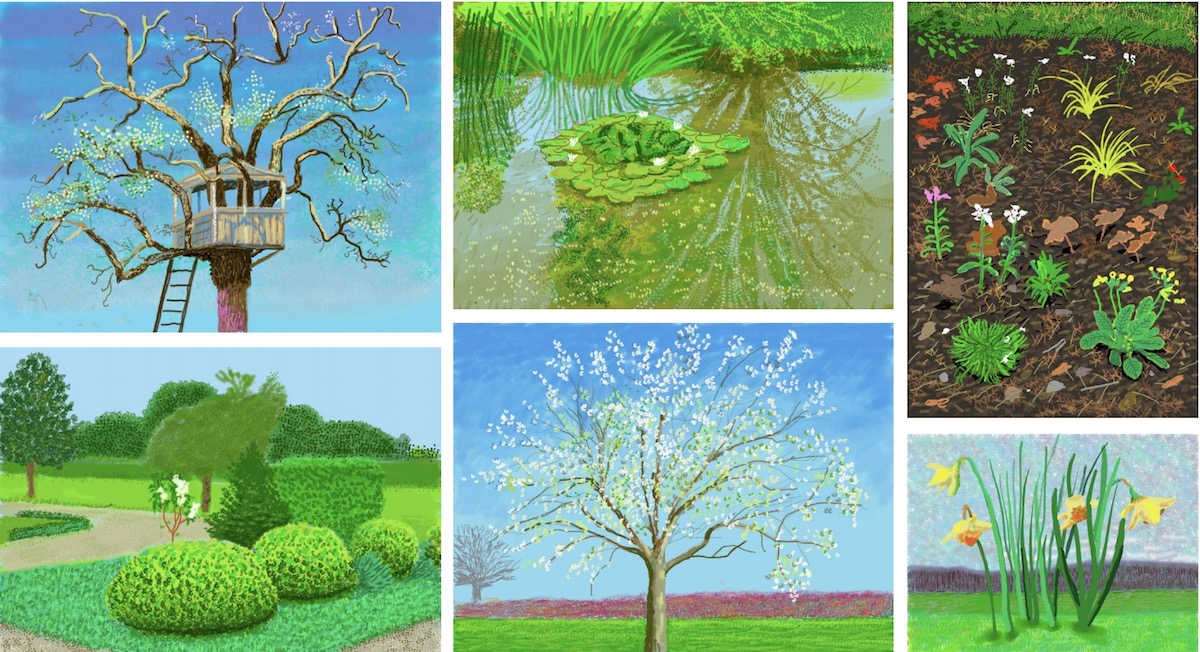From June 2021, the Royal Academy of Arts will present David Hockney: The Arrival of Spring, Normandy, 2020, comprising the period in which these works were made coincided with the beginning of the coronavirus (COVID-19) pandemic, where Hockney, along with the rest of Europe and much of the world, was in a state of lockdown. Faced with an unprecedented and perplexing period, Hockney’s focus on the emergence of spring instead celebrates the natural world and urges people to’ love life’ as he does himself in one of his frequently used phrases. This will be the first time the works will be exhibited, opening a little over a year after the works were done.
Hockney has been fascinated by conveying the passing of time through painting
The exhibition will present over a hundred works that have been ‘painted’ on an iPad. Presented chronologically, the works will be printed on paper at a large-scale and densely hung, evoking a sense of emersion in nature across the three Gabrielle Jungels-Winkler Galleries. Hockney has taken inspiration from the Bayeux Tapestry’s graphic and narrative form, which is located near his home in Normandy and to which he returns to view frequently.
In 2019 Hockney spent time in Normandy, prolonging his stay to capture spring in this rural corner of France, knowing that it would differ from the spring he had witnessed, painted and drawn in Yorkshire over the ten years between 2003 – 2013. Throughout his long career, Hockney has explored a variety of media in the making of art and investigates how new technology can be appropriated. The beginning of 2020 saw his renewed interest in the iPad. A mathematician updated the ‘brushes’ app on the latest model, tailoring it and developing many features in response to Hockney’s specifications. This also enabled Hockney to rapidly capture his subjects without setting up the paraphernalia associated with painting or drawing.
In July 2020, he wrote, “I have been working this year, 2020, to depict the arrival of spring in Normandy. This takes about three months, and I think it’s the most exciting thing nature has to offer in this part of the world. When the lockdown came… we were in a house in the middle of a four-acre field full of fruit trees. I could concentrate on one thing; I did at least one drawing a day with the constant changes going on all around the house. I kept drawing the winter trees, and then the small buds became the blossom and then the full blossom. Then the leaves started, and eventually, the blossom fell off, leaving a small fruit and leaves. This process took about two weeks; all the time, I was getting better at my mark-making on the screen, eventually doing, à la Monet, the water lilies in the pond.”
Born in Bradford in 1937, David Hockney attended Bradford School of Art before studying at the Royal College of Art from 1957 to 1962. Hockney’s reputation was established early, with his work featuring in the Young Contemporaries exhibition in London, 1960; an exhibition seen as marking British Pop Art’s arrival. He first visited Los Angeles in 1964, settling there in 1979, where he has since produced a large body of work over many decades. David Hockney was elected a Royal Academician in 1991 and appointed member of the Order of Merit in 2012.
David Hockney: The Arrival of Spring, Normandy, 2020, is organised by the Royal Academy of Arts, London. The exhibition is curated by Edith Devaney, Curator of Contemporary Projects at the Royal Academy of Arts, in close collaboration with the artist. Members’ Bookings from June 2021

